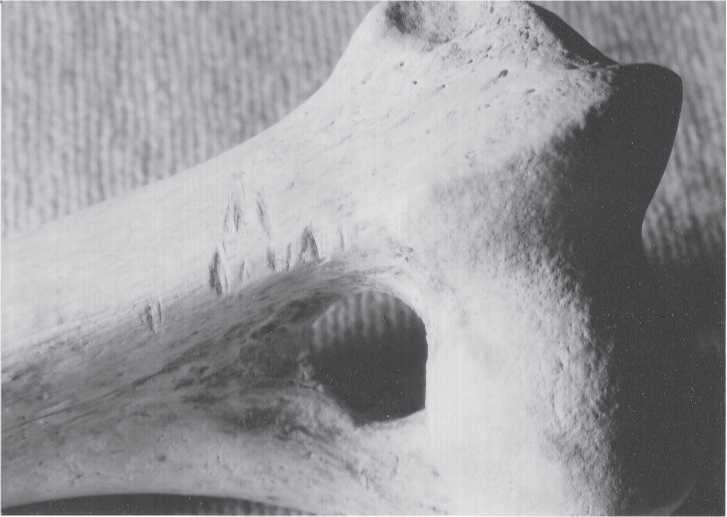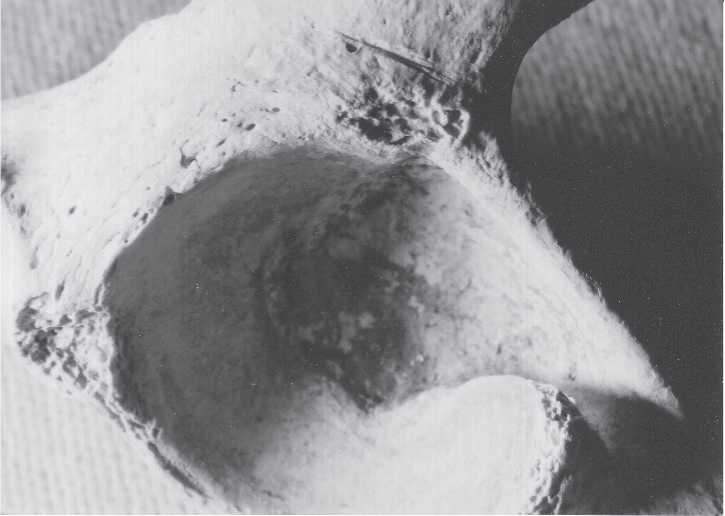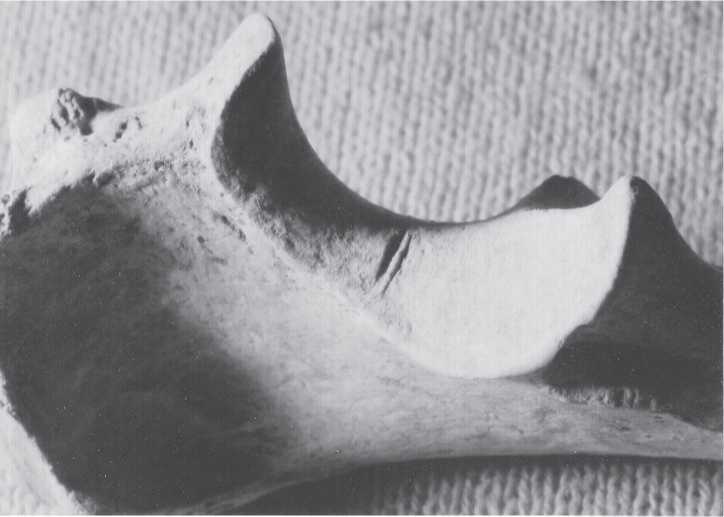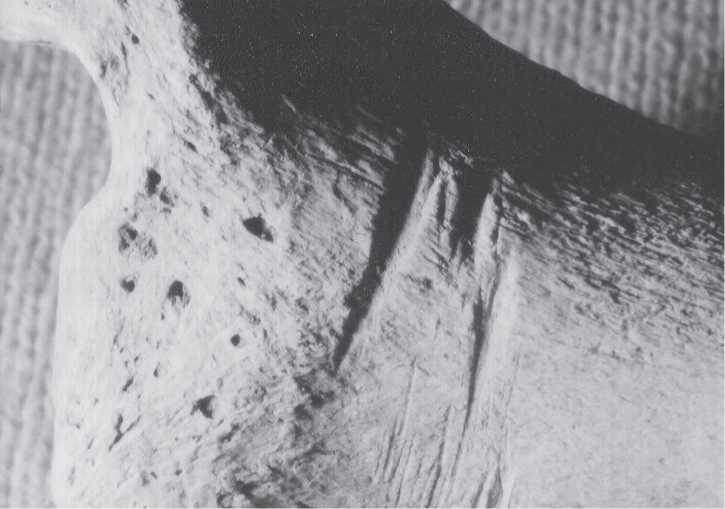Although ofNeolithic age, Boisman II is included in our study because it offers a glimpse of human economic life in a coastal setting. For several reasons we view Boisman II as a model of what late Pleistocene coastal northeast Asian life might have been like. Despite the strong difference between interior Siberian and coastal Primosky ecology and environments, there are interesting similarities as well as obvious differences in peri-mortem taphonomy of the two regions. Despite being an open site, the Boisman II faunal remains are preserved in an excellent condition. This we presume to be due to time as

Fig. 3.3 Boisman II dismemberment cut marks. Ten or more cut marks occur near the distal end
Of this humerus. Actual width of image in photograph is 3.3 cm (CGT neg. FESU 6-9-00:32).

Fig. 3.4 Boisman II dismemberment cut mark. One cut mark occurs near the acetabulum of this
Pelvic bone. Actual width of image in photograph is 3.3 cm (CGT neg. FESU 6-9-00:31).

Fig. 3.5 Boisman II dismemberment cut marks. Two cut marks occur in a proximal ulna joint. Actual width of image in photograph is 3.3 cm (CGT neg. FESU 6-9-00:28).

Fig. 3.6 Boisman II dismemberment cut marks. At least 12 cut marks occur near the distal end of a tibia. Actual width of image is 3.3 cm (CGT neg. FESU 5-9-00:23).
Well as soil conditions. Bone breakage patterning is much like that of our interior sites. This suggests similarities in human and carnivore processing behaviors in both regions. Several carnivore indicators, including end-hollowing, notching, tooth scratches, tooth dints, polishing, and acid erosion, are infrequent, but nevertheless demonstrate the presence of carnivores at Boisman II. Since dog remains have been found in Boisman II, the site’s bone damage that we attribute to carnivores must have been produced by village dogs. Given that dogs and wolves are more similar in body weight and jaw size than either is to hyenas and larger carnivores, the Boisman II carnivore damage provides a useful perimortem taphonomic signature to help differentiate between damage caused by middle-sized carnivores like the wolf, and that done by the larger hyenas of our Pleistocene interior sites.




 World History
World History









